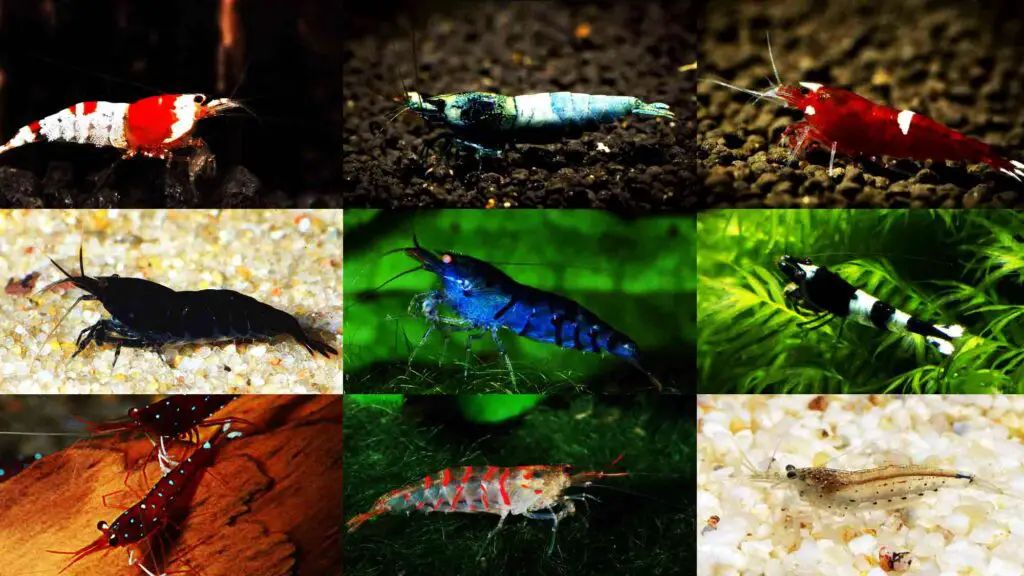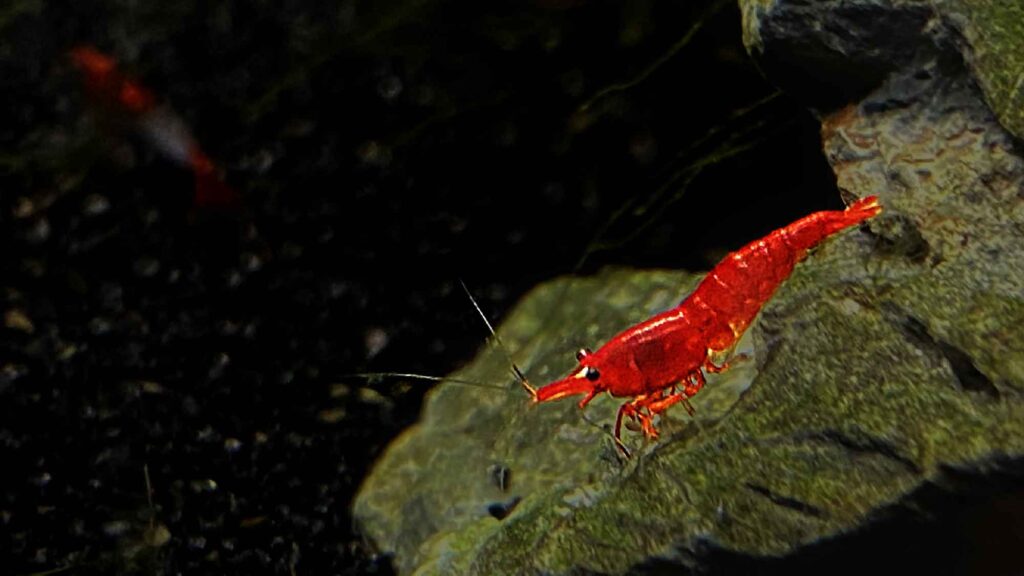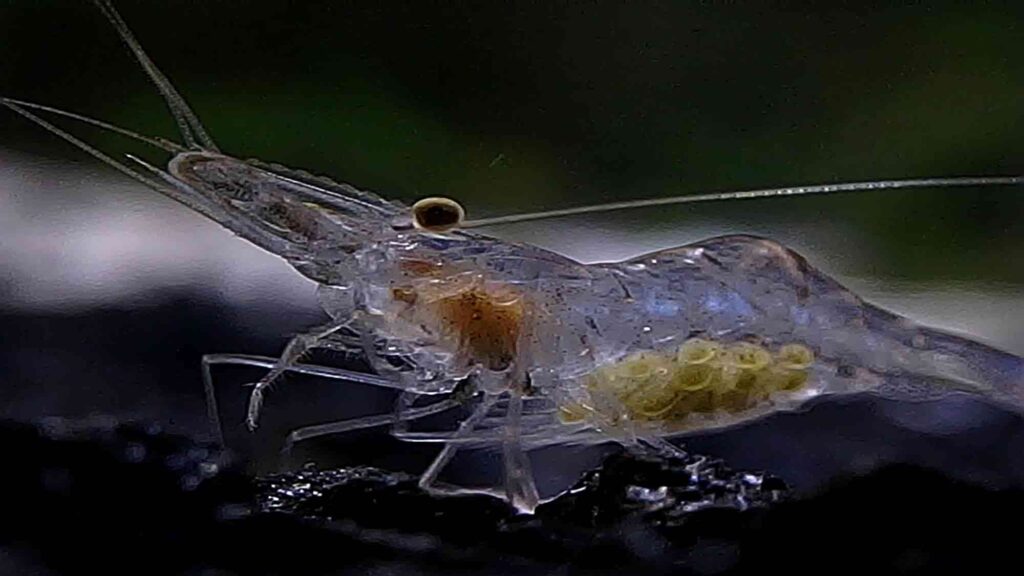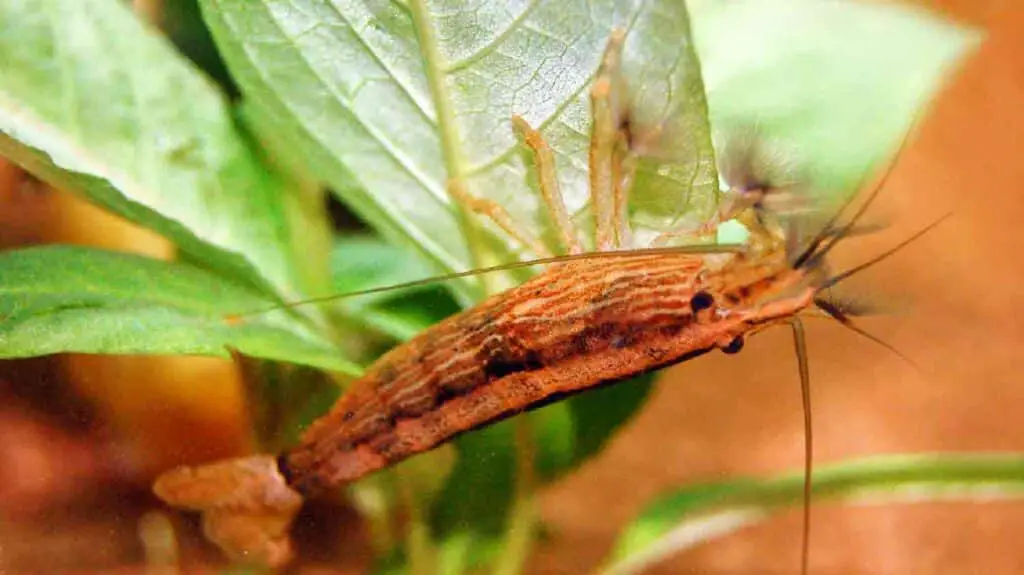An Aquarium is a tiny piece of a lake or a river that you keep in your home. Same is nature you will need to have different types of creatures to create a balance in your tank. Freshwater shrimps are an important part of any lake or river. Shrimps are responsible for keeping the water bodies clean in the wild. They are evolved to eat any decaying matter that fish can’t eat.
In recent years inverts and more specifically shrimps have become very famous in the hobby. They are not only famous for their ability to keep the tank clean, but are also famous for their beautiful colorations as well.
We made this article for you to see which type of shrimp might interest you to keep and all the information you will need about each type of freshwater shrimp.
Types of Freshwater Shrimps
In the aquarium hobby, there are a few different types of freshwater shrimps that gained popularity. These shrimps are native to different parts of the world. All the variants of shrimps you might see in your local pet stores belong to one of the following families of shrimps: Neocaridina, Caridina, Atyopsis, and Palaemonetes.
The figure below shows the taxonomy of most famous freshwater shrimp with their names.

Neocaridina and Caridina shrimps have the most varieties and are line bred to create a lot of different color morphs. The other genus of shrimps are mainly wild caught and do not have many varieties.
Here are our top picks of freshwater shrimps you can keep in your aquarium
Caridina Shrimps

Caridina shrimps are a genus of freshwater shrimps that have some of the most beautiful shrimps you can buy in the aquarium hobby. However these shrimps are very sensitive and fragile shrimps that need very specific water parameters to thrive.
There are a lot of different types of caridina shrimps so we made a blog just for types of caridina shrimps (with pictures). There are more than 280 different types of caridina shrimps in the world but not all of them are as beautiful as the ones we listed in our blog. As seen in the picture above, these shrimps are extremely beautiful and have sharp and vibrant colors.
These shrimps come in different sizes, shapes, and colors and some might look very different from other cardinia. The most common types are usually bee and crystal caridina that each also have different sub classes. Generally, most of these shrimps share the same care requirements. But some are slightly different and live in harder water.
To learn More about Caridina shrimps follow this link: Caridina Shrimps: Everything You Need To Know!
The following are the most famous types of caridina:
- Amano Shrimp
- Crystal Red Shrimp
- Black Tiger Shrimp
- Cardinal Sulawesi shrimp
- Blue Bolt Shrimp
Neocaridina Shrimps

Neocaridina shrimps are probably the most common types of freshwater shrimps in the aquarium hobby. They are hardy and do not need low TDS and ph water like caridina needs. Neocaridina can easily live in neutral tap water without any special water mix or simulation.
This makes them a very good fit for most beginner shrimp keepers who are just starting to keep and breed shrimps. Speaking of breeding, these shrimps breed in freshwater and eggs and fry will both live in freshwater. Some of the shrimps that we listed below will only breed in salt or brackish water even though they themselves live in freshwater.
The wild variants of neocaridina shrimps are not as colorful as the ones you might see in your local pet store. All the different color morphs that are available today are man made. In the past few decades shrimp breeders line bred neocaridina shrimps to develop different colorations. Each different color morph is known by its own name and some are also scientifically named.
To learn more about Neocaridina shrimps we made a special article that will explain everything in detail. You can find it here: Neocaridina Shrimps: Everything You Need To Know!
The most common types of neocaridina shrimps are:
- Cherry Shrimp
- Blue Dream Shrimp
- Bloody Mary Shrimp
- Green Jade Shrimp
- Black Neocaridina
- Orange Neocaridina
- Yellow Neocaridina
Ghost Shrimps

Ghost shrimps or glass shrimps are unique looking types of freshwater shrimp that are native to parts of North America. Thes shrimps are almost transparent that you can see through them. When you add these shrimps to a tank they almost become invisible and very hard to find.
Because of this not many aquarists are willing to keep them as pets. These shrimps are usually sold at a very low price and as feeder shrimps for larger predatory fish. But we believe these guys can be a great cleaning crew in a peaceful community tank. If you are interested to add them to your tank here is a guide we made on how to properly care for them
These shrimps have a few different varieties and each type has different transparency levels. In pet stores all the different variants are called “Ghost shrimp”. So you should know that this name is a general name for a group of different shrimps in the Palaemonetes genus.
These shrimps are also very easy to keep and breed. So with their lower price, they are the best beginner friendly shrimp to start learning about shrimps and their care requirements. Almost all other types of shrimps listed here are more sensitive and more expensive than ghost shrimps.
Bamboo Shrimps

Bamboo shrimps are native to Southeast Asia that gain popularity for their ability to filter the water column. These shrimps are equipped with fan shaped organs that can catch particle free swimming in the water column.
They are a great shrimp to clean the microalgae or any floating algae that can cause cloudy water in a tank. They will continuously stay busy with cleaning the water and after some time you will see a big difference in the quality of your water.
At the same time they are very beautiful shrimps that can grow to bigger sizes. This makes them a good fit for tanks that have medium or small fish. Because Bamboo shrimps do not have any defensive mechanism other than their size, you should avoid keeping them with aggressive and predatory types of fish.
Bamboo shrimps can be found in different shades of brown and some can even become dark red. The color on their body can change and become pale or darker if they are under stress or when they try to camouflage with their surroundings. They also have horizontal bars that run throughout their body.
If you have any other shrimps that eat the leftover foods in your tank, you should also think about the free floating particles that other shrimps cant eat. The free floating fish food is as bad as the food that sinks to the bottom. So having one or two bamboo shrimps can take care of these particles for you.
These shrimps belong to a different genus of freshwater shrimps in the family of Atyidae. In this genus there are only 2 species that are available in the aquarium trade. Both species look so similar that most people might not be able to distinguish them. The biggest difference between the 2 genus is the number of teeth they possess. They are also slightly different in size but in pet stores they are all sold at around 2 inches mark. It’s almost impossible to distinguish them at this size.
To learn more about Bamboo shrimps follow this like: Bamboo Shrimp Care Guide
Vampire shrimps

Vampire Shrimps are another type of freshwater filter feeding shrimps that can grow to a large size like bamboo shrimps. However, the vampire shrimps are very different in terms of looks and appearance. Their hard shell and their 2 thick front legs makes them look almost like a small crayfish.
Depending on the lake or rivers that these shrimps are being collected they come in slightly different colorations. It seems like the harder the water is the more blue variants vampire shrimps will produce.
They are often sold in white, gray, and blue colors. But there are different shades of each color and some might even become red.
Like bamboo shrimp, the vampire shrimp is equipped with fan shaped arms that can catch food from the water column. This makes them a great cleaning creature in the tanks that have floating food particles.
Despite their scary name, “Vampire Shrimp”, these guys are super calm species that will not harm other fish or shrimps. They are shy and mind their own business. They are named vampires due to their single fang looking nail they have on each of their legs. They use these nails to hold on to objects as the areas they live in have slightly fast moving waters.
We made a complete care guide for this species that will walk you through all the details of vampire shrimps.
You can find this article here: Vampire Shrimp Care Guide
Are shrimp good for aquarium?
Shrimps are amazing creatures that will help your tank stay clean and algae free. They are the best addition to any community tank that has peaceful fish. They will happily live with their tank mates and eat the leftover food. This will help the tank to stay clean and clear at all times.
Because some shrimps are small they make a tasty snack for larger fish. So it is important to make sure your fish are not predatory and have a small mouth that shrimps can’t fit in their mouth.
You will also need to make sure that your water parameters are matching to what your desired shrimps need. So we strongly encourage you to check the guide we made for each type of shrimps to learn about their care requirements.
Can Aquarium Shrimps Live With Snails?
Almost all types of freshwater snails are safe to live in with shrimps. They both can leave in harmony and will nonstop scavenge for food.
Some might claim Assassin snails are not good with shrimps. But in our experience they can live peacefully together as shrimps are much faster than Assassin snails so they can harm your healthy shrimps.
What shrimps Should You pick?
Well it’s very easy to answer this question. As long as you don’t have aggressive and predatory fish, you can pick any shrimp that can live in your tank’s parameters.
If you have leeds or no experience we recommend starting with hardy and easy to keep types of shrimps. Once you gain some experience with these shrimps you can upgrade to more sensitive shrimps.